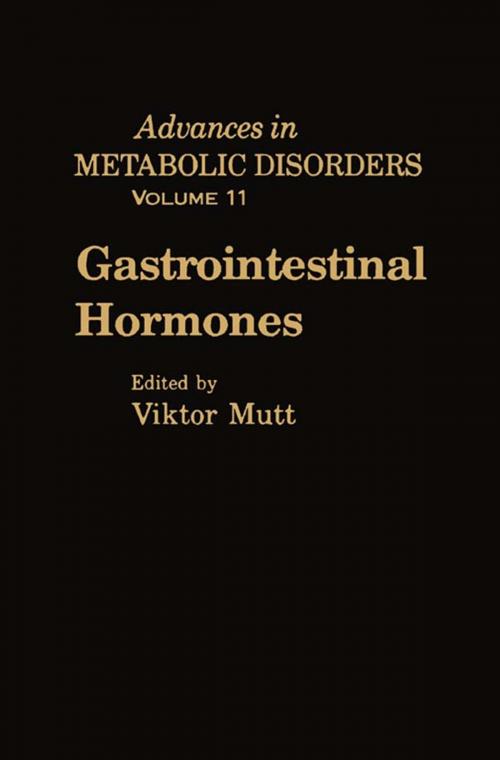Gastrointestinal Hormones
Advances in Metabolic Disorders, Vol. 11
Nonfiction, Health & Well Being, Medical, Specialties, Clinical Medicine, Health, Ailments & Diseases| Author: | ISBN: | 9781483215532 | |
| Publisher: | Elsevier Science | Publication: | October 22, 2013 |
| Imprint: | Academic Press | Language: | English |
| Author: | |
| ISBN: | 9781483215532 |
| Publisher: | Elsevier Science |
| Publication: | October 22, 2013 |
| Imprint: | Academic Press |
| Language: | English |
Advances in Metabolic Disorders, Volume 11: Gastrointestinal Hormones covers the developments in the study of gastrointestinal (GI) hormones. The book discusses the cytochemical techniques in work with GI hormones; the general aspects and problems for the radioimmunoassays of GI hormones in the 80s; and the response of the GI hormone system to the pathological changes. The text also describes the evolutional aspects of GI hormones; the cell membrane receptors for secretagogues on pancreatic acinar cells; and the synthesis of GI hormones using organic chemical or recombinant DNA techniques.
Gastrin is reviewed with regard to its forms and fragments in tissues, circulating components during post- and perisecretory processing, cellular origins and distribution, actions and structure-function relations, metabolic disposal, nervous and chemical control for its release, and its role in human pathology. The book further tackles the chemical, anatomical, and biological studies on gastrin-releasing peptides, as well as the physiological actions of gastric inhibitory polypeptide. Discussions about the vasoactive intestinal peptide, incretin, enteroglucagon, neuropeptide Y, peptide HI, galanin, cholecystokinin-58, neuropeptide K, peptide YY, motilin, somatostatin-28, neurotensin, substance P, and opioid peptides are also encompassed. The text concludes by looking into the investigations on the structure and function of the head activator in hydra and in mammals. Molecular biologists, endocrinologists, histochemists, physiologists, and those involved in the research about GI hormones will find the book invaluable.
Advances in Metabolic Disorders, Volume 11: Gastrointestinal Hormones covers the developments in the study of gastrointestinal (GI) hormones. The book discusses the cytochemical techniques in work with GI hormones; the general aspects and problems for the radioimmunoassays of GI hormones in the 80s; and the response of the GI hormone system to the pathological changes. The text also describes the evolutional aspects of GI hormones; the cell membrane receptors for secretagogues on pancreatic acinar cells; and the synthesis of GI hormones using organic chemical or recombinant DNA techniques.
Gastrin is reviewed with regard to its forms and fragments in tissues, circulating components during post- and perisecretory processing, cellular origins and distribution, actions and structure-function relations, metabolic disposal, nervous and chemical control for its release, and its role in human pathology. The book further tackles the chemical, anatomical, and biological studies on gastrin-releasing peptides, as well as the physiological actions of gastric inhibitory polypeptide. Discussions about the vasoactive intestinal peptide, incretin, enteroglucagon, neuropeptide Y, peptide HI, galanin, cholecystokinin-58, neuropeptide K, peptide YY, motilin, somatostatin-28, neurotensin, substance P, and opioid peptides are also encompassed. The text concludes by looking into the investigations on the structure and function of the head activator in hydra and in mammals. Molecular biologists, endocrinologists, histochemists, physiologists, and those involved in the research about GI hormones will find the book invaluable.















